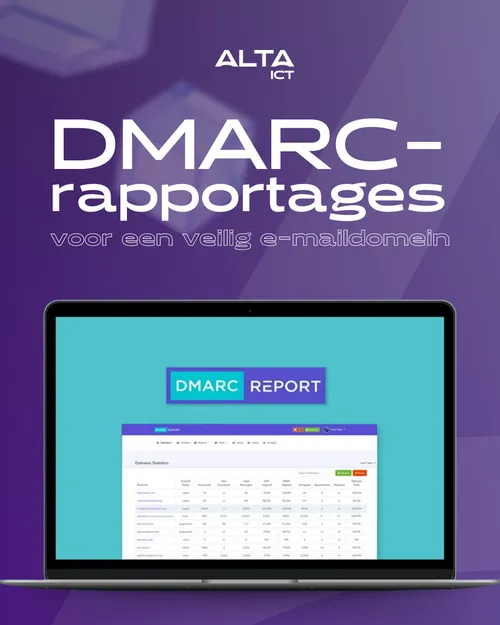DMARC: using your email domain DMARC (Domain-based Message Authentication, Reporting, and Conformance) is an essential tool that provides detailed reports on how your email domain is being used, and potentially misused, by third parties.
By analyzing these reports, you gain insight into which emails are being allowed through, which are being blocked, and why.
This helps you discover weaknesses in your email security and address them in a timely manner.
Reading Guide forDMARCReportsDMARC reports contain a wealth of information.
What exactly do you want to look for?
- Sending IP addresses: this detail shows which IP addresses are sending emails on behalf of your domain.
This is crucial for identifying authorized and unauthorized senders.
If you notice unusual IP addresses, this may indicate an attempt at spoofing, where attackers try to abuse your domain.
- SPF and DKIM outcomes: verify that SPF and DKIM records are successfully validated.
If many emails fail SPF or DKIM validation, this may indicate configuration issues that need to be addressed to ensure security.
- Alignment results: see if the ‘From’ header of an email matches the domains set in SPF and DKIM.
Misalignments may indicate attempts to misuse your domain.
Aggregate and Forensic Reports DMARC reports can be divided into two main types of reports: Aggregate Reports (RUA) and Forensic Reports (RUF).
- Aggregate reports (RUA) provide an overview of email traffic sent on behalf of your domain.
Which IP addresses are sending emails and how are they validated by SPF and DKIM.
This helps identify unauthorized sources and optimize your email traffic.
- Forensic Reports (RUF) provide detailed information about specific emails that fail to meet DMARC policy requirements.
They provide insight into individual failed authentication attempts, including the exact causes and IP addresses involved.
This makes it possible to quickly intervene and neutralize threats.
Time for action Once you are familiar with reading and interpreting DMARC reports, it is possible to uncover patterns, so-called trends.
Are you repeatedly seeing failed SPF or DKIM validations from specific IP addresses?
Then it’s time to take action:
- Adjust SPF and DKIM records: optimize your SPF and DKIM records based on the insights from the reports to reduce the risk of misuse.
- Block suspicious IP addresses: notice that certain IP addresses keep trying to send emails from your domain without proper validations?
Block them to prevent further attempts.
- Improve your DMARC policy: consider moving from a “none” policy (reporting without action) to a “quarantine” or “reject” policy, where suspicious emails are immediately flagged or rejected.
Benefits to your business Regularly analyzing DMARC reports offers numerous benefits to your business:
- Enhanced Security: You actively monitor who is using your email domain and protect against unwanted activity.
- Improved deliverability: By ensuring a properly configured email environment, you increase the chances that your legitimate emails will reach customers’ inboxes and not end up in spam.
- Customer trust: By properly securing your e-mail domain, you send a strong message to your customers that their data is in safe hands with you.
Get started today with DMARC reporting At ALTA-ICT, we’d love to help you set up, interpret and optimize DMARC reporting.
Want to discover how you can use this powerful tool to protect your email domain and strengthen your security strategy?
Contact us, and together let’s take your email security to the next level.





